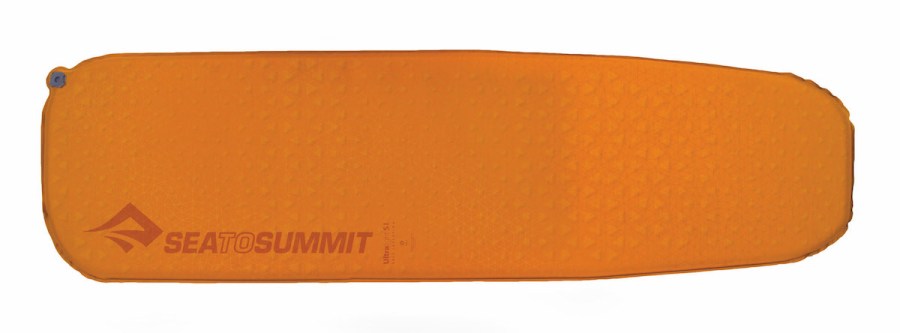Judy Armstrong reviews an affordable self-inflating mat
There was a time when the best lightweight sleeping mats available for backpackers were self-inflating, open-cell foam, with Therm-a-Rest leading the way. It’s difficult now to see when an open-cell foam mat would be a better choice over an airbed. If you do prefer this route, the Ultralight has a gently tapered shape, with triangular holes punched out for reduced weight and insulation in specific areas. The biggest holes are under the head and lower legs; Sea To Summit call this Delta Core vertical coring technology. ‘Sticky’ triangles are placed on both surfaces at shoulder and butt level to stop the mat sliding on a tent floor or sleeping bag.
It takes a long time to self-inflate the first time although it was faster after several uses. The flat valve is multi-faceted: pull open the cover and the central section for self-inflation. Press the central part back into the valve with a tiny orange knob facing upward and blow to increase pressure or tweak the knob to delicately release air. To deflate completely, remove and turn the central section so the valve has an orange disc showing, for one-way airflow while you’re rolling the mat. This is handy to stop the mat reinflating while it’s being packed although it was still a fight to squeeze it back into its stuff sack.
Insulation is good for three-season use and the mat is also available in Small (£70) and Large (£90). Comfort levels are fair but I could feel virtually every pebble, twig and wrinkle under the mat. Problem is, once you’ve slept on an airbed, it’s difficult to go back.








